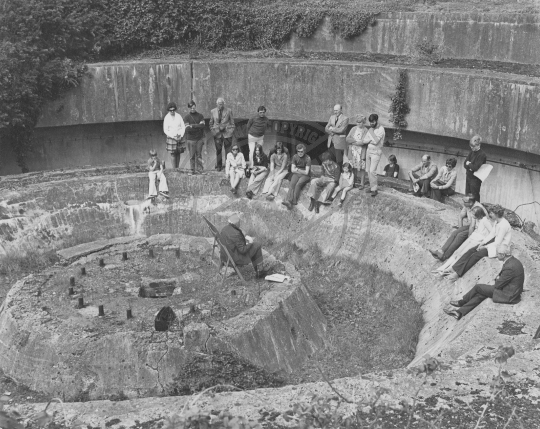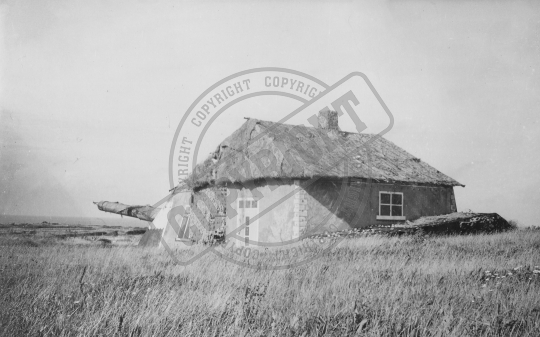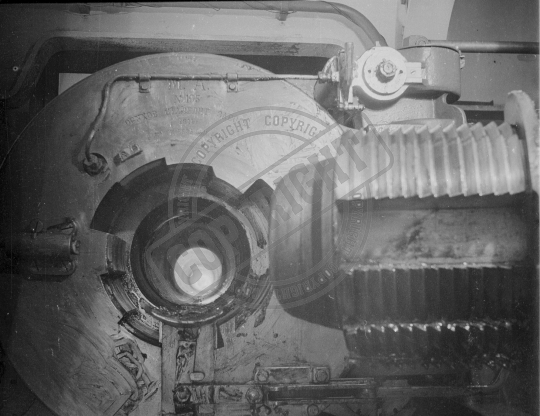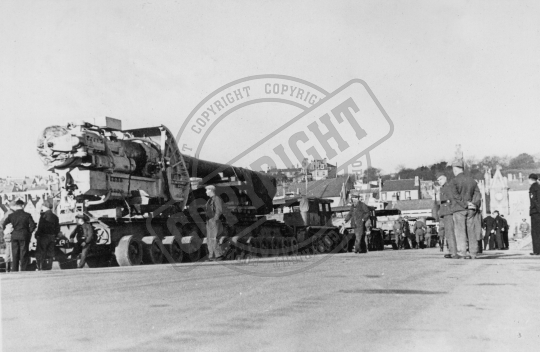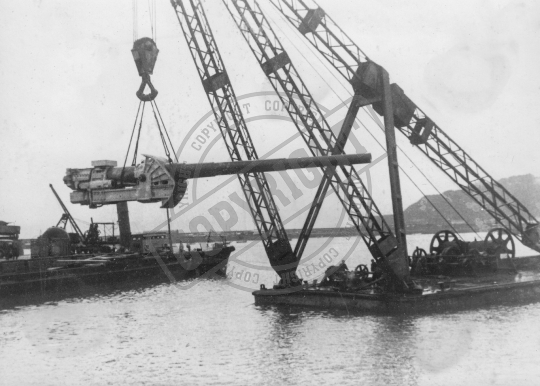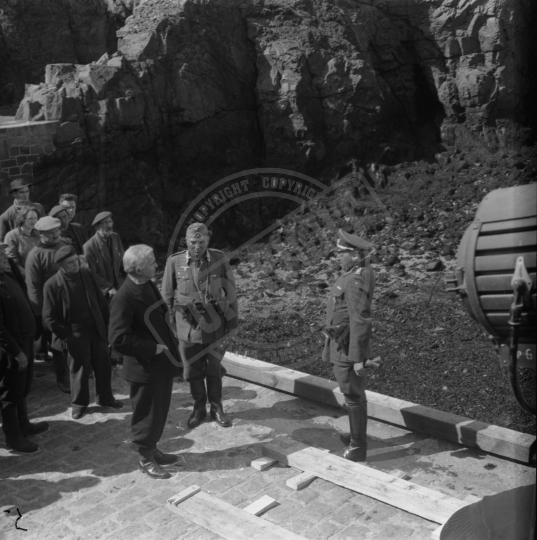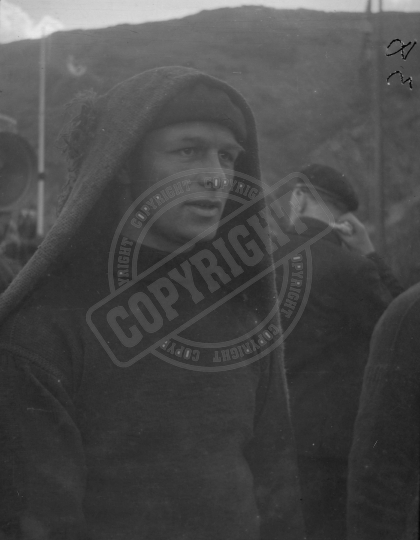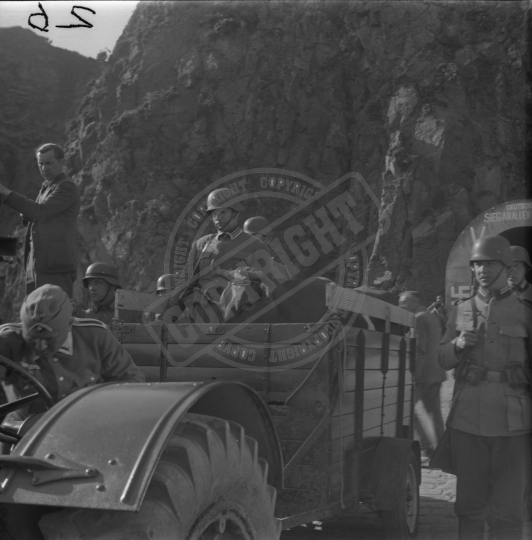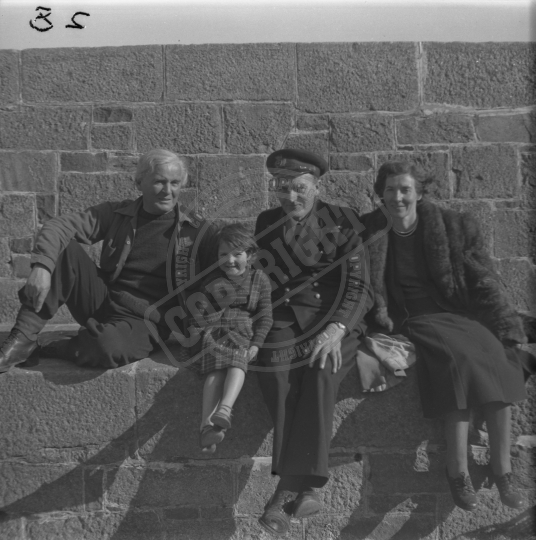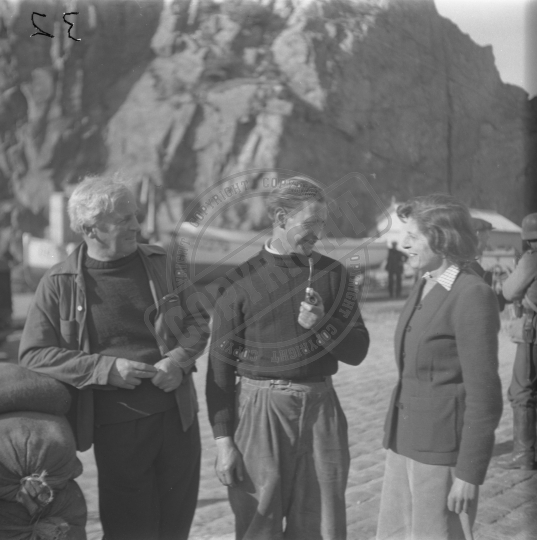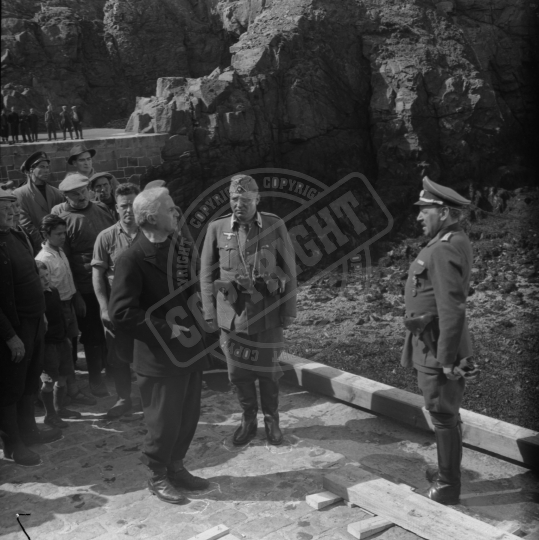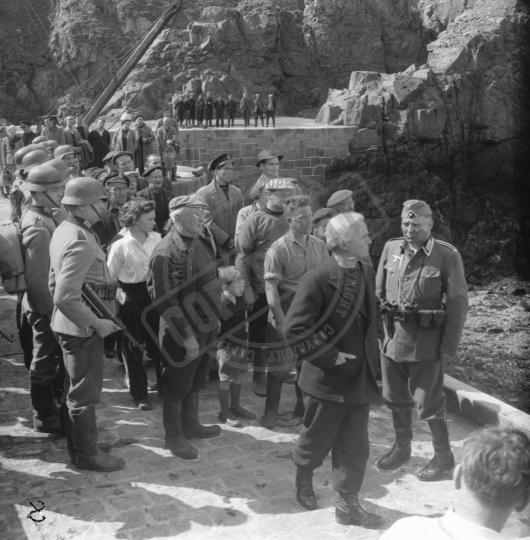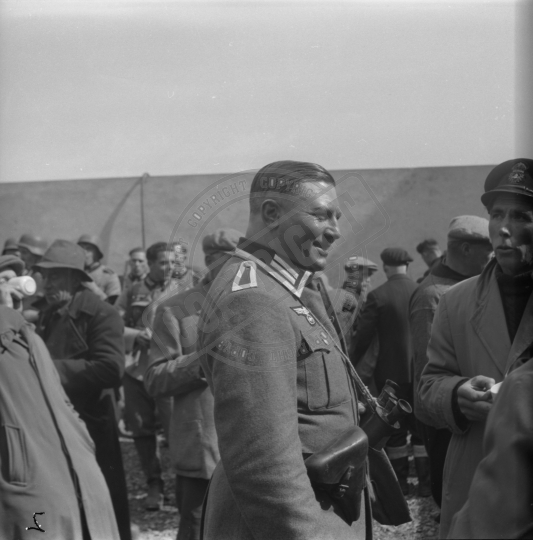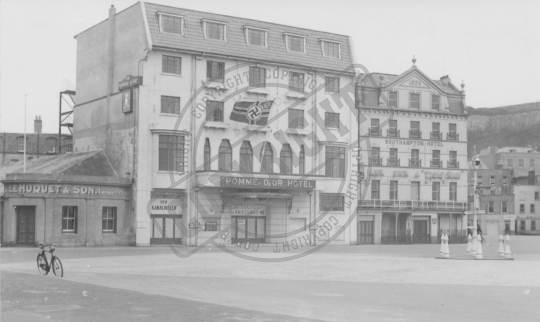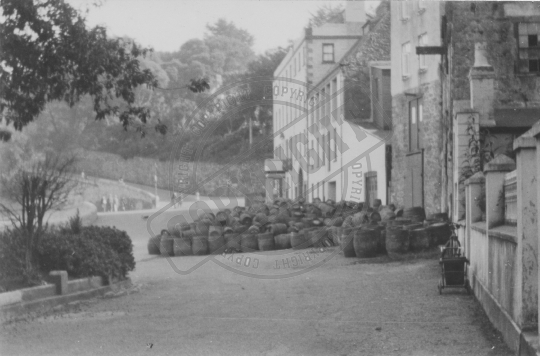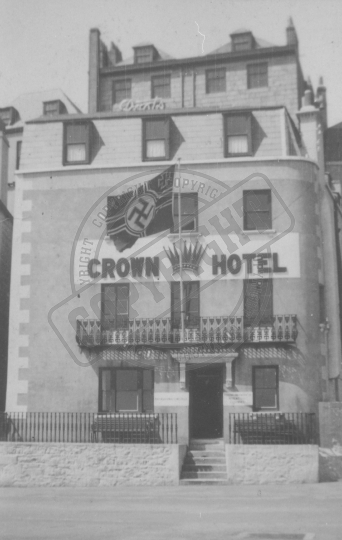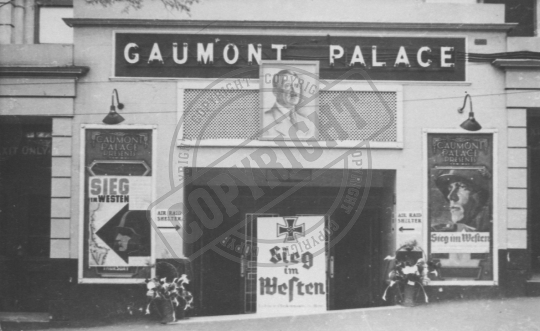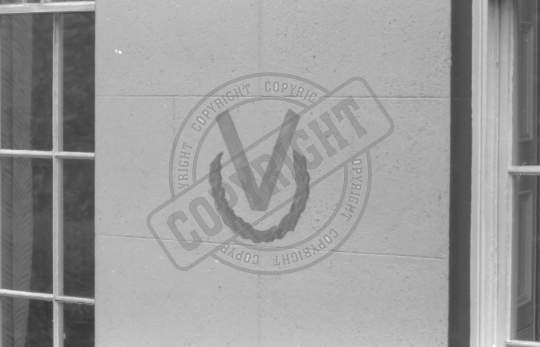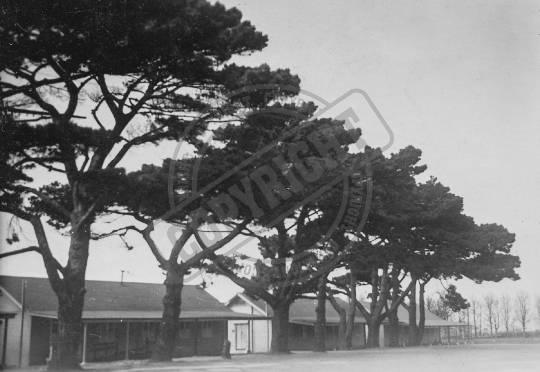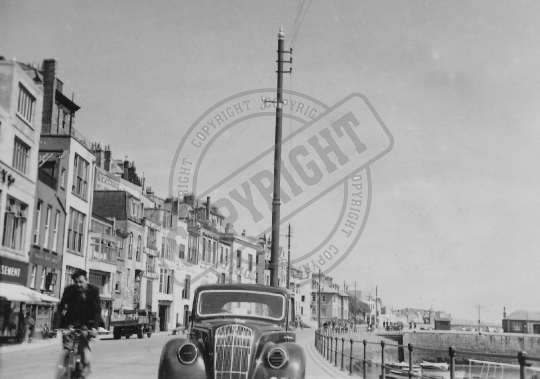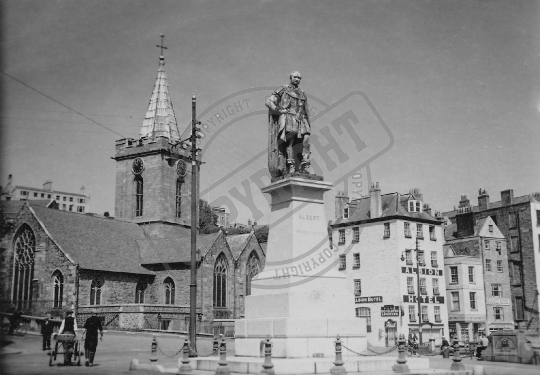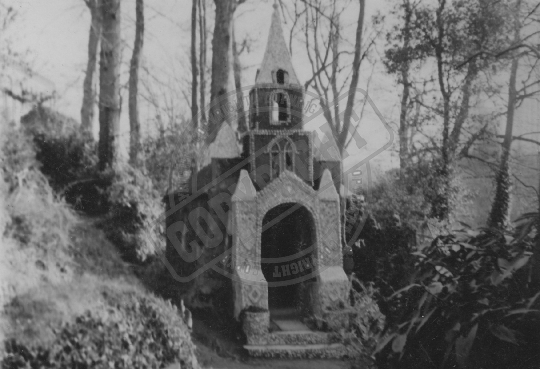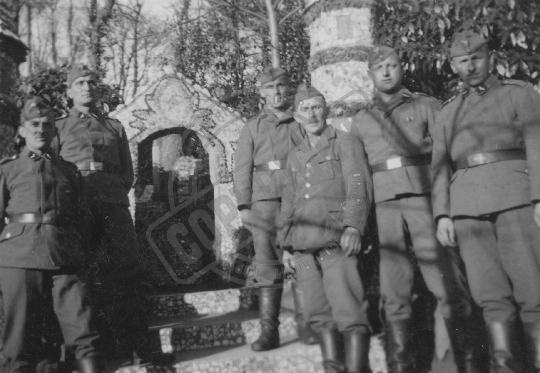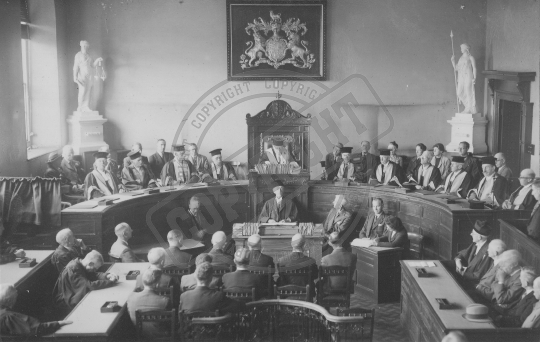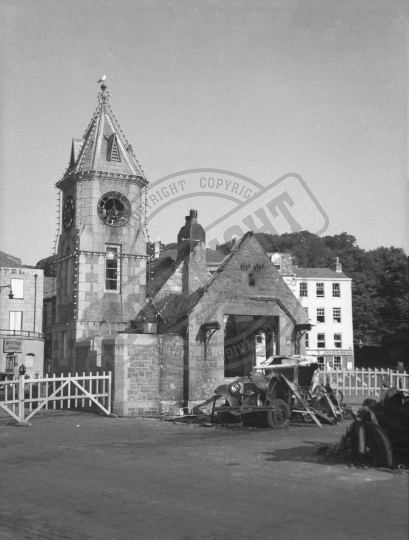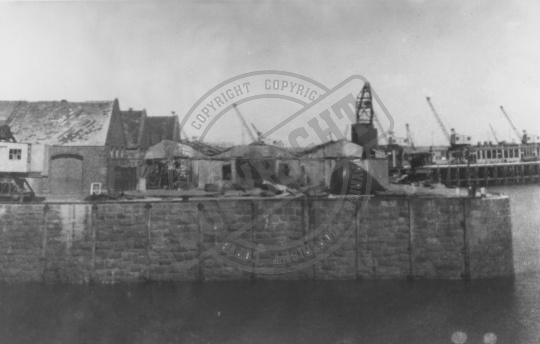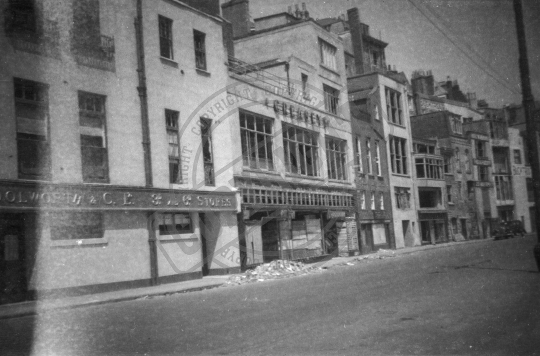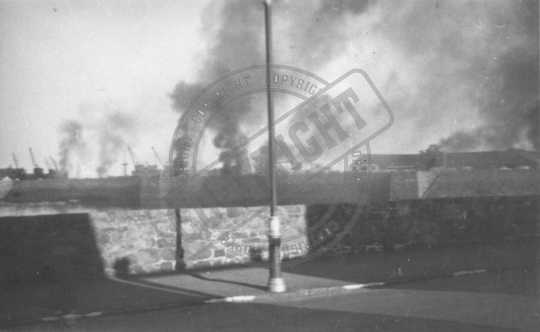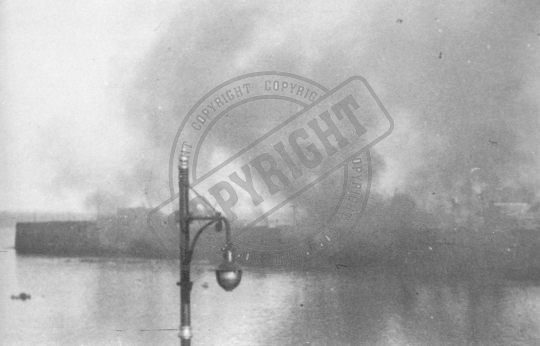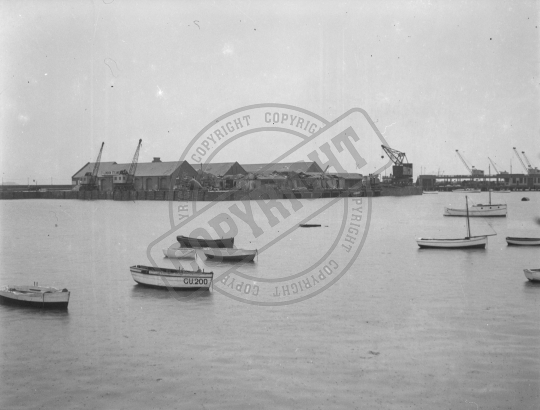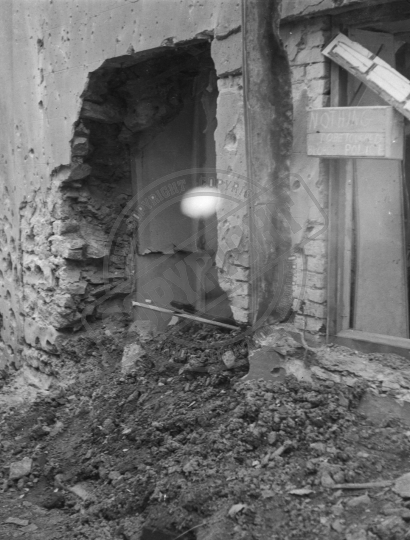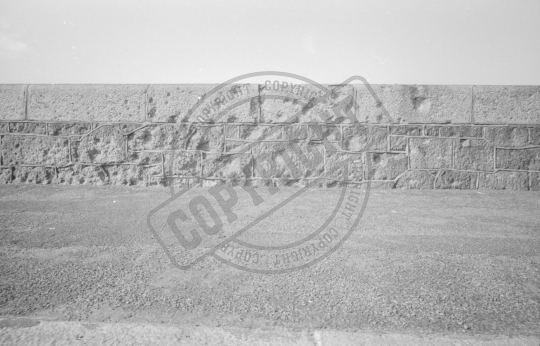Results (282)
TPL_00107
Batterie Mirus, the largest German installation in the Channel Islands housed four 30.5cm naval guns, this example shows that the Germans camouflaged the structure to look like a cottage.
TPL_00096
The open breach of the 30.5cm K14(r) gun at Batterie Mirus which was the largest German naval installation in the Channel Islands.
CIMM_0023
With the Mirus barrel loaded on to a 48-wheel trailer the convoy of halftracks is preparing to leave the Cambridge berth and head across the island to the construction site. Batterie Mirus was the largest German installation in the Channel Islands and housed four 30.5cm naval guns.
CIMM_0021
The floating crane Antee lifts the huge barrel of Batterie Mirus at the Cambridge berth in St Peter Port. Batterie Mirus was the largest German installation in the Channel Islands and housed four 30.5cm naval guns.
TPL_00035
Filming of 'Appointment with Venus’ on the Channel Island of Sark. The plot is set during the outbreak of WWII when the Ministry of Agriculture and the War Office join forces to launch a daring mission to rescue a highly lucrative pedigree cow, Venus, from the German-occupied Channel Island of Armorel. English Army Major Valentine Moreland (David Niven), his A.T.S. assistant Nicola Fallaize (Glynis Johns), radio operator Forbes (Patric Doonan) and ship’s pilot Trawler Langley (Noel Purcell) are dispatched to the small island to rescue Venus. Problems arise when the German commander on Armorel, Weiss (George Coulouris), also discovers the cow’s value and intends to evacuate Venus back to Germany. The film went on general release in 1951.
TPL_00073
Filming of 'Appointment with Venus’ on the Channel Island of Sark. The plot is set during the outbreak of WWII when the Ministry of Agriculture and the War Office join forces to launch a daring mission to rescue a highly lucrative pedigree cow, Venus, from the German-occupied Channel Island of Armorel. English Army Major Valentine Moreland (David Niven), his A.T.S. assistant Nicola Fallaize (Glynis Johns), radio operator Forbes (Patric Doonan) and ship’s pilot Trawler Langley (Noel Purcell) are dispatched to the small island to rescue Venus. Problems arise when the German commander on Armorel, Weiss (George Coulouris), also discovers the cow’s value and intends to evacuate Venus back to Germany. The film went on general release in 1951.
TPL_00047
Filming of 'Appointment with Venus’ on the Channel Island of Sark. The plot is set during the outbreak of WWII when the Ministry of Agriculture and the War Office join forces to launch a daring mission to rescue a highly lucrative pedigree cow, Venus, from the German-occupied Channel Island of Armorel. English Army Major Valentine Moreland (David Niven), his A.T.S. assistant Nicola Fallaize (Glynis Johns), radio operator Forbes (Patric Doonan) and ship’s pilot Trawler Langley (Noel Purcell) are dispatched to the small island to rescue Venus. Problems arise when the German commander on Armorel, Weiss (George Coulouris), also discovers the cow’s value and intends to evacuate Venus back to Germany. The film went on general release in 1951.
TPL_00046
Filming of 'Appointment with Venus’ on the Channel Island of Sark. The plot is set during the outbreak of WWII when the Ministry of Agriculture and the War Office join forces to launch a daring mission to rescue a highly lucrative pedigree cow, Venus, from the German-occupied Channel Island of Armorel. English Army Major Valentine Moreland (David Niven), his A.T.S. assistant Nicola Fallaize (Glynis Johns), radio operator Forbes (Patric Doonan) and ship’s pilot Trawler Langley (Noel Purcell) are dispatched to the small island to rescue Venus. Problems arise when the German commander on Armorel, Weiss (George Coulouris), also discovers the cow’s value and intends to evacuate Venus back to Germany. The film went on general release in 1951.
TPL_00045
Filming of 'Appointment with Venus’ on the Channel Island of Sark. The plot is set during the outbreak of WWII when the Ministry of Agriculture and the War Office join forces to launch a daring mission to rescue a highly lucrative pedigree cow, Venus, from the German-occupied Channel Island of Armorel. English Army Major Valentine Moreland (David Niven), his A.T.S. assistant Nicola Fallaize (Glynis Johns), radio operator Forbes (Patric Doonan) and ship’s pilot Trawler Langley (Noel Purcell) are dispatched to the small island to rescue Venus. Problems arise when the German commander on Armorel, Weiss (George Coulouris), also discovers the cow’s value and intends to evacuate Venus back to Germany. The film went on general release in 1951.
TPL_00037
Filming of 'Appointment with Venus’ on the Channel Island of Sark. The plot is set during the outbreak of WWII when the Ministry of Agriculture and the War Office join forces to launch a daring mission to rescue a highly lucrative pedigree cow, Venus, from the German-occupied Channel Island of Armorel. English Army Major Valentine Moreland (David Niven), his A.T.S. assistant Nicola Fallaize (Glynis Johns), radio operator Forbes (Patric Doonan) and ship’s pilot Trawler Langley (Noel Purcell) are dispatched to the small island to rescue Venus. Problems arise when the German commander on Armorel, Weiss (George Coulouris), also discovers the cow’s value and intends to evacuate Venus back to Germany. The film went on general release in 1951.
TPL_00031
Filming of 'Appointment with Venus’ on the Channel Island of Sark. The plot is set during the outbreak of WWII when the Ministry of Agriculture and the War Office join forces to launch a daring mission to rescue a highly lucrative pedigree cow, Venus, from the German-occupied Channel Island of Armorel. English Army Major Valentine Moreland (David Niven), his A.T.S. assistant Nicola Fallaize (Glynis Johns), radio operator Forbes (Patric Doonan) and ship’s pilot Trawler Langley (Noel Purcell) are dispatched to the small island to rescue Venus. Problems arise when the German commander on Armorel, Weiss (George Coulouris), also discovers the cow’s value and intends to evacuate Venus back to Germany. The film went on general release in 1951.
TPL_00029
Filming of 'Appointment with Venus’ on the Channel Island of Sark. The plot is set during the outbreak of WWII when the Ministry of Agriculture and the War Office join forces to launch a daring mission to rescue a highly lucrative pedigree cow, Venus, from the German-occupied Channel Island of Armorel. English Army Major Valentine Moreland (David Niven), his A.T.S. assistant Nicola Fallaize (Glynis Johns), radio operator Forbes (Patric Doonan) and ship’s pilot Trawler Langley (Noel Purcell) are dispatched to the small island to rescue Venus. Problems arise when the German commander on Armorel, Weiss (George Coulouris), also discovers the cow’s value and intends to evacuate Venus back to Germany. The film went on general release in 1951.
TPL_00017
The Pomme d’Or Hotel at the Weighbridge, St Helier, Jersey was the Headquarters of the Hafenkommandant (Senior German Naval Officer). This is where the Bailiff Alexander Coutanche met Generalmajor Wulf the Island Commander at 12 o’clock on 9th May 1945 and escorted him to an awaiting German pinnace at the harbour and out to HMS Beagle anchored in St Aubin’s Bay to meet with Brigadier Snow and the other British representatives.
TPL_00022
Beer barrels emptied by the Germans at the Guernsey Brewery South Esplanade St. Peter Port.
TPL_00021
The Crown Hotel in St Peter Port, Guernsey was the German naval headquarters. Now called the Ship and Crown.
TPL_00020
Gaumont cinema in St. Julian's Avenue showing 'Victory in the West' in 1941. Civilians could go to the cinema but the films were mostly shown in German.
TPL_00018
The German version of the V sign which appeared on most premises occupied by German troops.
SP_0019
Photographed on 9th April 1941 and described as Lager Beaucamps, this is the camp used by the Guernsey Militia for many years as a training area. The site is now home to the playing fields of Beaucamps School, though seen here on the northern side of the facility would have been used by the Germans as a similar facility but under 'new management’. This Photograph is from a small collection of six taken by an unknown German soldier posted to Guernsey in 1941 with 319 Infantry Division.
SP_0018
This photograph was taken on 18th June 1941. Looking north from alongside the slip way opposite Town Church, this view of the town front St Peter Port shows the absence of motor vehicles. With most locals restricted to horse drawn transport or bicycles, the only vehicle evident is marked with a WH indicating its use by the German Wehrmacht (Armed Forces). This Photograph is from a small collection of six taken by an unknown German soldier posted to Guernsey in 1941 with 319 Infantry Division.
SP_0017
This view of the St Peter Port Town church and Prince Albert statue was photographed on 18th June 1941. Not yet evident are the German road signs painted on the wall of the church and the extensive barbed wire entanglements that were placed around the harbour. This Photograph is from a small collection of six taken by an unknown German soldier posted to Guernsey in 1941 with 319 Infantry Division.
SP_0003
Wartime view of the Little Chapel. The miniature chapel was built by Brother Déodat who started work in March 1914. His plan was to create a miniature version of the famous grotto and basilica at Lourdes in France.
SP_0002
Germans take time to visit the Little Chapel. The miniature chapel was built by Brother Déodat who started work in March 1914. His plan was to create a miniature version of the famous grotto and basilica at Lourdes in France.
OA_008
The Bailiff of Guernsey, Jurats and members of the States Controlling Committee seated in the Royal Court.
TPL_00006
The burnt out weighbridge in St Peter Port following the bombing of the harbour on the evening of 28th June 1940.
TPL_00015
The devastation caused by the events of 19th June 1944, when Lightnings of the U.S.A.A.F. dropped bombs in the harbour. Every window pane has been broken, note the shattered remains piled up outside Creasy's, and the lettering on Woolworth's stores that has been dislodged.
TPL_00013
Smoke rises from burning vehicles shortly after a bombing raid on the White Rock in St Peter Port. The raid on the evening of 28th June 1940 resulted in 33 civilian dead. The parked tomato trucks were mistaken for military vehicles.
TPL_00012
Smoke drifts from burning vehicles shortly after a bombing raid on the White Rock in St Peter Port. The raid on the evening of 28th June 1940 resulted in 33 civilian dead. The parked tomato trucks were mistaken for military vehicles.
TPL_00011
Severe damage to the Cambridge Berth sheds following a bombing raid on the 28th June 1940.
TPL_00010
Bomb damage to a property in the Strand St Peter Port following an air raid on 28th June 1940.



